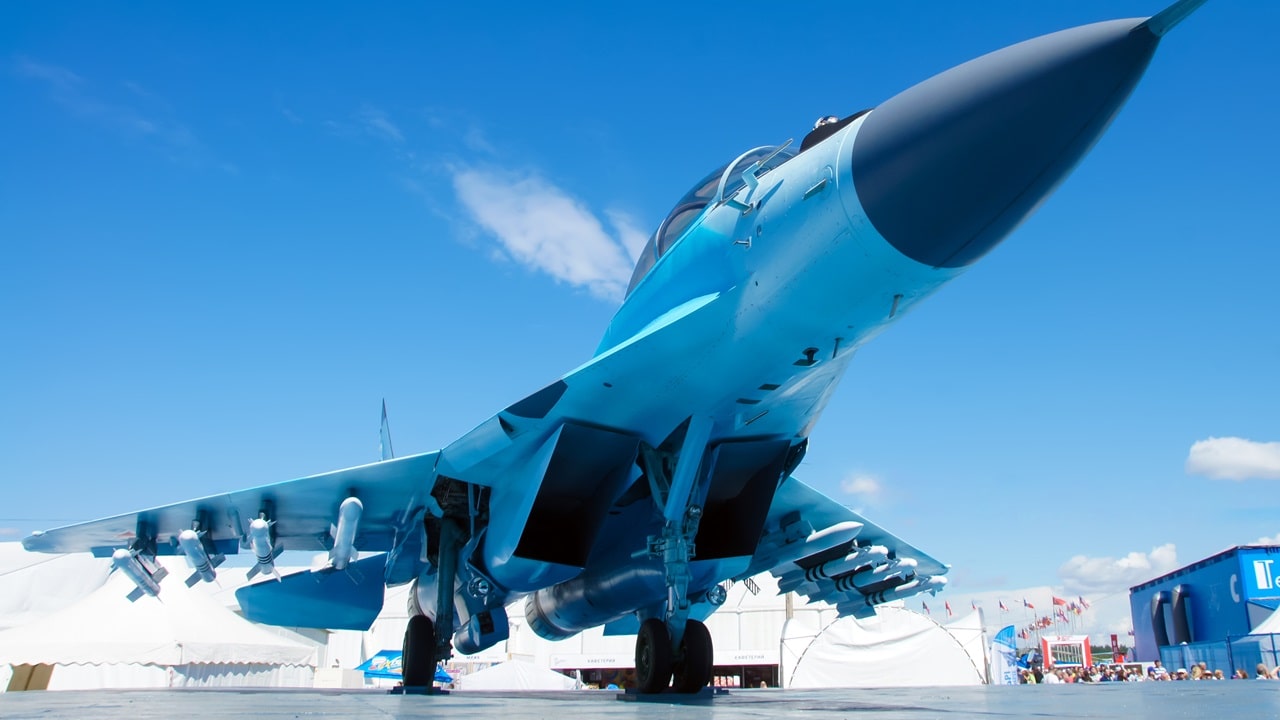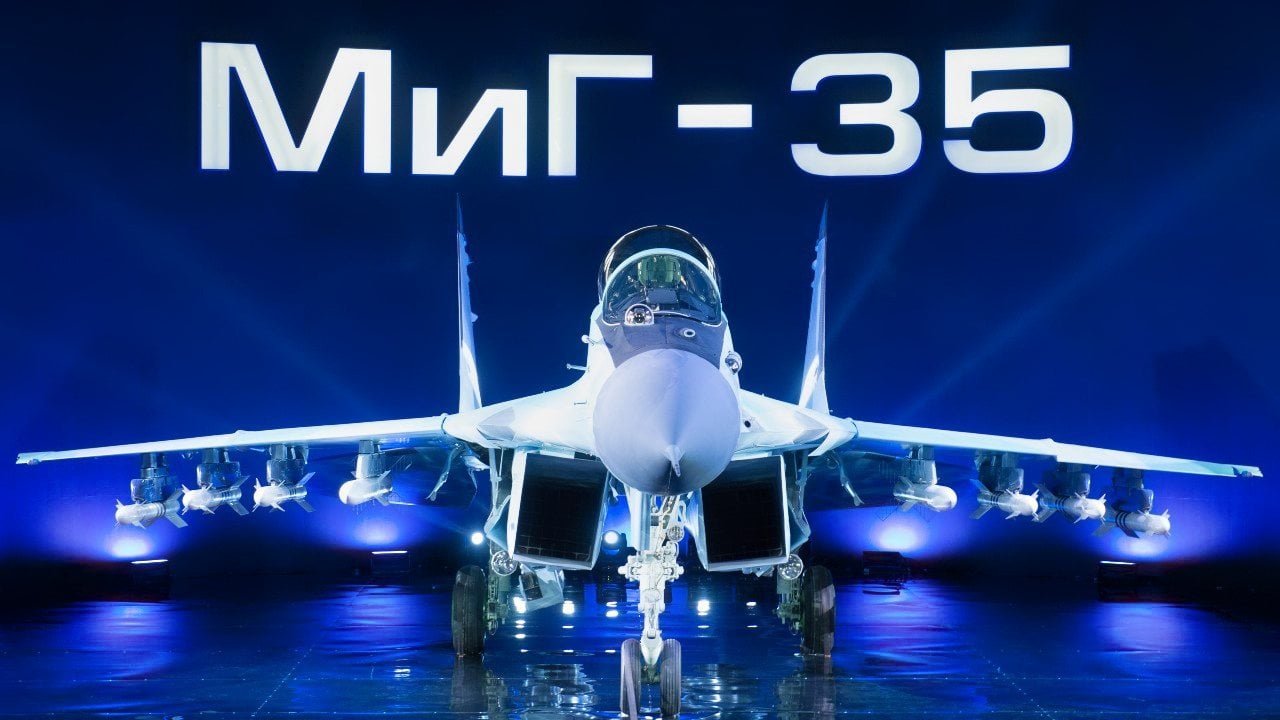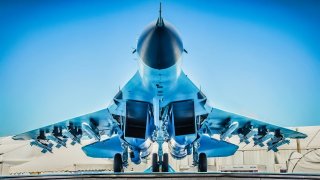Russia's MiG-35 Is Nothing But a Flying Fighter Failure
The MiG-35 Fulcrum, Russia's 4.5-generation multirole fighter jet developed by Mikoyan, has failed to live up to its anticipated legacy. Despite being an upgrade to the MiG-29 series and boasting advanced radar capabilities, the MiG-35 has seen limited production and no combat testing, even amidst Russia's ongoing conflict in Ukraine.
Summary and Key Points: The MiG-35 Fulcrum, Russia's 4.5-generation multirole fighter jet developed by Mikoyan, has failed to live up to its anticipated legacy. Despite being an upgrade to the MiG-29 series and boasting advanced radar capabilities, the MiG-35 has seen limited production and no combat testing, even amidst Russia's ongoing conflict in Ukraine.
The aircraft has struggled to attract foreign buyers, likely due to a lack of operational use and the impact of international sanctions. The MiG-35's challenges highlight the difficulties Russia faces in maintaining its position in the global defense market.
MiG-35 Fulcrum: The Russian Fighter Jet That Failed to Impress
Russian aerospace giant Mikoyan has produced some of the world’s most capable aircraft.
The Kremlin and Mikoyan would claim that the MiG-35 Fulcrum is a worthy continuation of a Russian air combat legacy stretching back to World War Two. But facts beg to differ.
The MiG-35 Fulcrum Fighter Jet
A 4.5-generation multirole fighter jet, the MiG-35 is an upgrade to the MiG-29M/M2 and MiG-29K/KUB fighter jets. Its NATO designation is “Fulcrum-F.”
The MiG-29M is the advanced multirole version of the aircraft with a new airframe, a fly-by-wire system, and new, more powerful engines. The M2 is the two-seat version of the MiG-29M, with almost identical capabilities to the one-seater.
The MiG-29K is the naval version of the aircraft and sports folding wings, arrestor gear, and a reinforced landing gear so the fighter jet can operate from aircraft carriers. The aircraft also has some low observability features – not amounting to full stealth – mainly radar-absorbing paint coatings. The KUB is the two-seat version of the MiG-29K with identical performance to the one-seater.
The MiG-35 was first presented in 2017 during an international air show in Moscow. Since then, there has been little to show for all the marketing behind the aircraft. Although the MiG-35 entered operational service in 2019, Mikoyan has produced only a few of these fighter jets.
According to Russian defense officials, the MiG-35 fighter jet sports advanced radar capabilities and an overall superior performance compared to its predecessors. They claim its capabilities can even match the U.S. F-35 Lightning II stealth fighter. As is often the case with Russian assertions, these claims are very likely inaccurate, or gross exaggerations.
MiG-35: Operationally Untested, Internationally Unmarketable
To begin with, the MiG-35 is completely untested. The likely limited operational fleet of MiG-35 fighter jets hasn’t seen any combat to test its capabilities, unlike the F-35. Despite more than 900 days of fighting in Ukraine, the Russian Aerospace Forces have yet to deploy the new fighter jet in the conflict. And it is not like the Russian military can’t use the help.

Although air combat is relatively rare in the war due to the prevalence of strong air defense weapon systems on both sides, the Ukrainian Air Force has been using fighter jets equipped with long-range munitions to take out key Russian logistical functions. Right now, for example, Ukrainian fighter jets are destroying bridges in the Kursk Oblast to trap Russian units and prevent an influx of reinforcements. Russian fighter jets, however, are largely absent.
The MiG-35 was developed with an eye toward foreign exports, but it hasn’t attracted as much interest from foreign buyers as the Kremlin would like. This is likely the result of a lack of operational testimonials combined with international sanctions on Russia. Russian foreign military exports have dropped significantly since the war began, and the poor performance of Russian weapon systems and munitions in the fighting has reduced the overall marketability of Moscow’s military wares.

About the Author
Stavros Atlamazoglou is a seasoned defense journalist specializing in special operations and a Hellenic Army veteran (national service with the 575th Marine Battalion and Army HQ). He holds a BA from the Johns Hopkins University and an MA from the Johns Hopkins’ School of Advanced International Studies (SAIS). His work has been featured in Business Insider, Sandboxx, and SOFREP.
Image Credit: Creative Commons and/or Shutterstock.


